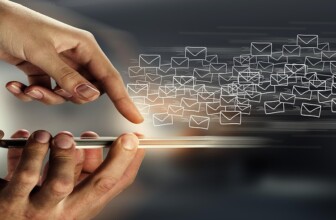Transforming Remote Monitoring: The Advantages of AI Integration
Introduction
Remote monitoring has significantly evolved over the past few years, especially with the integration of artificial intelligence (AI) technologies. This article explores the advantages of AI integration in remote monitoring, focusing on how it transforms industries, increases efficiency, and provides enhanced decision-making capabilities. With the need for effective remote monitoring more crucial than ever, understanding the role of AI becomes essential.
Section 1: Understanding Remote Monitoring
What is Remote Monitoring?
Remote monitoring refers to the process of observing and managing systems, equipment, or processes from a distance. It leverages technology to collect data in real-time, which can be analyzed to ensure optimal performance. Initially adopted in fields such as telecommunications and utilities, remote monitoring now spans various sectors including healthcare, manufacturing, and agriculture.
The Evolution of Remote Monitoring
The evolution of remote monitoring has transitioned from basic manual checks to advanced automated systems. Early technologies relied on simple sensors and human oversight, but advancements in machine learning and cloud computing have enabled real-time analytics and immediate response mechanisms. AI integration enhances these capabilities, allowing for predictive maintenance, anomaly detection, and automated reporting.
Section 2: The Role of AI in Remote Monitoring
How AI Enhances Data Collection
AI algorithms can process vast amounts of data collected from various sensors, improving the accuracy and speed of data collection. This leads to more reliable monitoring and facilitates quick decision-making. With AI, organizations can identify patterns and anomalies that may not be visible through traditional data collection methods.
AI-Driven Analytics in Monitoring
AI-driven analytics allow for deeper insights from the data collected. Advanced machine learning models can analyze trends over time, providing actionable insights that inform operational adjustments or preventive measures. This capability is particularly crucial in sectors such as healthcare, where AI can help detect early signs of deterioration in patient health, ensuring timely interventions.
Section 3: Benefits of AI Integration
Increased Efficiency
AI integration into remote monitoring systems enhances operational efficiency by automating routine tasks, thereby freeing human resources for more complex problem-solving. An example can be seen in supply chain management, where AI monitors inventory levels and predicts stock requirements, reducing excess and shortages.
Enhanced Decision-Making
With AI analytics providing real-time data insights, decision-making becomes quicker and more informed. Managers can access trends and predictions that help steer their teams effectively, ensuring that strategies are data-driven rather than based on gut feeling. This ultimately leads to more successful outcomes and a competitive edge.
Section 4: Sector-Specific Applications
Healthcare
In healthcare, AI enhances remote patient monitoring systems to track vital signs, detect anomalies, and alert healthcare providers in real-time. This enables proactive healthcare management, improving patient outcomes and operational efficiencies in healthcare settings.
Industrial Applications
Industrial sectors utilize AI for monitoring machinery and equipment. Predictive maintenance powered by AI can anticipate failures before they occur, minimizing downtime and optimizing maintenance schedules. Real-time condition monitoring aids in ensuring the continuous operation of critical machinery.
Section 5: Challenges of AI Integration in Remote Monitoring
Data Privacy Issues
AI integration in remote monitoring poses data privacy concerns. Organizations must ensure compliance with regulations and ethical standards while collecting and analyzing sensitive data, particularly in healthcare. A robust data governance framework can help mitigate these risks.
Technical Limitations
While AI technologies offer powerful analytics capabilities, they often require substantial investment in infrastructure and technical expertise. Organizations may experience challenges in integrating AI effectively with existing systems, necessitating comprehensive training and upgrades.
Section 6: Real-Life Examples and Case Studies
Case Study: AI in Healthcare Monitoring
One notable case is the use of AI in continuous glucose monitoring systems for diabetic patients. Companies like Dexcom have integrated AI algorithms to analyze glucose levels, providing alerts for abnormal readings and enabling patients to manage their condition effectively.
Case Study: Industrial Monitoring Solutions
General Electric (GE) employs AI-driven IoT platforms for gas and steam turbines, monitoring performance data to predict maintenance needs and optimize energy output. This application illustrates the profound impact of AI in enhancing operational reliability and efficiency.
Section 7: Future Trends in Remote Monitoring
The Rise of Predictive Analytics
Predictive analytics will increasingly become a standard feature in remote monitoring solutions. Leveraging AI to forecast potential issues will empower organizations to take preemptive action, safeguarding operations and ensuring continuity.
AI and IoT Integration
The convergence of AI and the Internet of Things (IoT) will create more sophisticated remote monitoring systems. Enhanced data exchange between IoT devices and AI analytics will enable real-time insights and optimized responses, enhancing efficiency across industries.
Section 8: Best Practices for Implementing AI
Choosing the Right Tools
Organizations must select AI tools that align with their operational goals and data requirements. A thorough needs assessment should guide the tool selection process, ensuring that the technology integrates seamlessly with existing systems.
Training and Development
Investing in training staff on AI technologies is imperative for successful implementation. Continuous education about the latest advancements and best practices is crucial for maximizing the benefits of AI integration in remote monitoring.
Q&A Section
Common Questions about AI in Remote Monitoring
1. What is the role of AI in remote monitoring?
AI enhances data collection, analysis, and decision-making processes in remote monitoring, improving efficiency and effectiveness.
2. How can healthcare benefit from AI in remote monitoring?
AI can help in monitoring patient vitals in real-time, allowing for timely interventions and better management of health conditions.
3. What are the primary challenges of integrating AI into remote monitoring?
Data privacy and technical limitations are the primary challenges businesses face when adopting AI technologies.
4. Are there any case studies that highlight the use of AI in remote monitoring?
Yes, companies like Dexcom and General Electric showcase successful implementations of AI in healthcare and industrial monitoring respectively.
5. What trends should we expect in the future for remote monitoring?
Expect an increase in predictive analytics and the integration of AI with IoT for more sophisticated monitoring solutions.
FAQ Section
Frequently Asked Questions
1. How does AI improve the accuracy of remote monitoring?
AI analyzes data patterns that are too complex for manual interpretation, resulting in highly accurate monitoring processes.
2. What industries benefit the most from AI in remote monitoring?
Sectors like healthcare, manufacturing, and agriculture have seen significant improvements in efficiency and decision-making due to AI.
3. How expensive is it to implement AI in remote monitoring systems?
Costs can vary significantly; however, the long-term savings and efficiency gains often justify the initial investment.
4. Can AI monitoring systems prevent equipment failure?
Yes, predictive analytics allow systems to monitor the conditions of equipment and anticipate failures before they occur.
5. Is training necessary for using AI in remote monitoring?
Yes, staff training is essential to maximize the benefits and improve the efficiency and effectiveness of AI systems.
Resources
| Source | Description | Link |
|---|---|---|
| HealthIT.gov | AI in Healthcare Technology | Visit |
| GE Digital | Case Studies on Industrial AI | Visit |
| AI & Machine Learning | McKinsey | Insights on AI Trends | Visit |
| IoT Analytics | Industry Analysis of IoT in Remote Monitoring | Visit |
| Harvard Business Review | Impact of AI on Business Operations | Visit |
Conclusion
The integration of AI in remote monitoring is reshaping how industries operate, leading to improved efficiency, timely decision-making, and predictive capabilities. Despite potential challenges, the benefits of adopting AI technologies far outweigh the drawbacks. As we continue to advance into a digital-first future, AI will remain a central pillar in transforming remote monitoring practices.
Disclaimer
This article was created with assistance from artificial intelligence (AI) to enhance research and drafting efficiency. All content has been reviewed and refined by human contributors.










